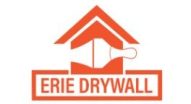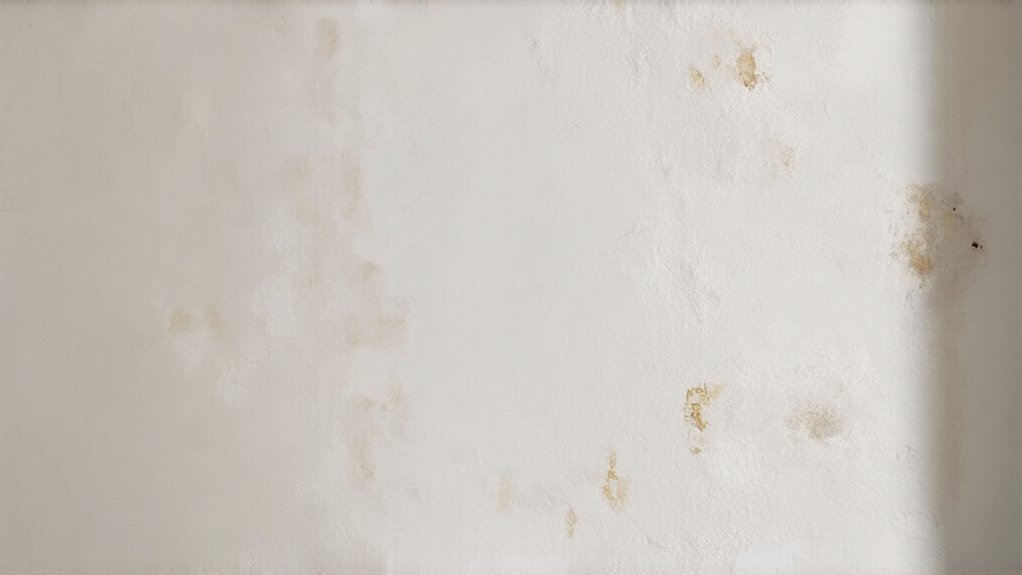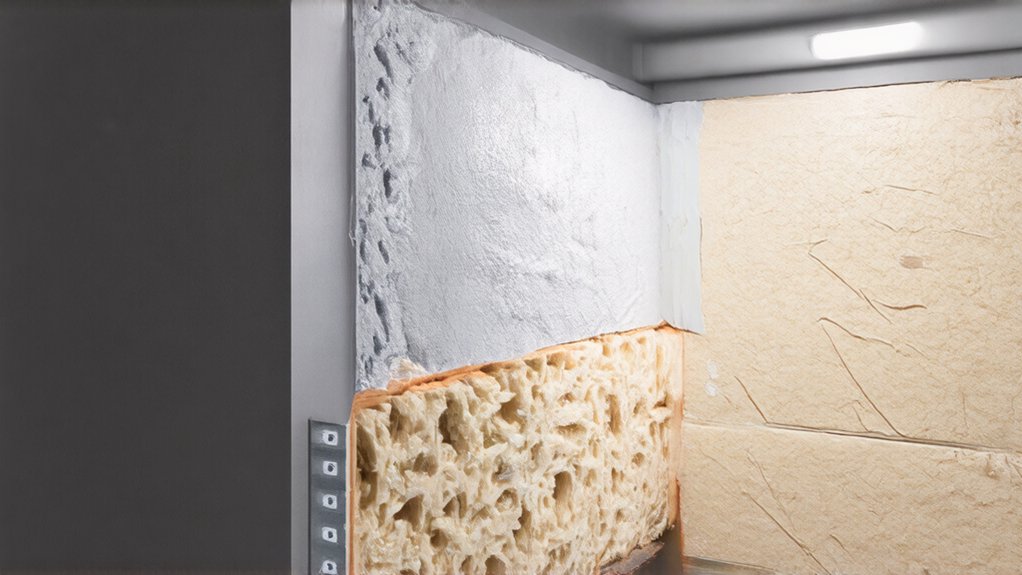You can detect hidden drywall water damage by looking for yellowish stains, bubbling paint, musty odors, and soft wall surfaces. Use a moisture meter and infrared camera to identify moisture zones non-invasively. Check areas near plumbing, windows, and ceilings for dark spots or texture changes. While small repairs might be DIY-friendly, significant damage requires professional assessment. Quick action prevents mold growth and protects your home's structural integrity. Want to learn more about protecting your walls?
Signs of Hidden Water Damage in Drywall
When water infiltrates your walls, it can wreak havoc before you even notice its presence. Look for telltale signs like discolored patches that appear yellowish or brownish, which often indicate moisture trapped behind your drywall.
Bubbling wallpaper is another red flag that suggests water damage might be lurking. You might also notice a musty odor, soft or warped wall surfaces, or small paint blisters. These symptoms can signal potential structural issues and mold growth.
If you spot any of these warning signs, don't ignore them. Early detection can save you from costly repairs and protect your home's integrity. Drywall repair professionals in Erie, PA recommend addressing water damage quickly to prevent extensive structural problems.
Tools and Equipment for Water Damage Detection
Several key tools can help you detect hidden water damage in your drywall, saving you time and preventing extensive structural issues. The right equipment makes all the difference in catching problems early:
- Moisture meter for precise readings
- Infrared camera for non-invasive scanning
- Thermal imaging device to reveal hidden moisture zones
Professional-grade moisture meters allow you to measure water content behind walls without destructive testing. Infrared camera scans provide visual evidence of temperature variations that might indicate water infiltration. By investing in these tools, you'll protect your home's structural integrity and catch potential damage before it becomes a costly repair nightmare. Local drywall contractors in Erie can provide expert assistance if advanced detection reveals significant water damage.
Step-by-Step Moisture Assessment Techniques
Water damage can sneak up on you, altering your peaceful home into a potential structural hazard. You'll want to start with visual inspection methods, carefully examining walls for discoloration, bubbling paint, or subtle stains.
Moisture testing techniques become vital in detecting hidden issues. Use a moisture meter to measure drywall dampness, scanning affected areas systematically. Pay special attention to areas near plumbing, windows, and ceilings where water frequently accumulates.
Dark spots or unusual texture changes often signal underlying moisture problems. If you're uncertain about the extent of damage, consider consulting a professional who can provide thorough moisture assessment.
Professional vs. DIY Repair Strategies
After pinpointing moisture issues during your assessment, you'll need to decide whether to tackle drywall repairs yourself or call in a professional. Consider these key factors:
- Extent of damage
- Your skill level
- Alternative repair methods
DIY repairs can save money, but they're risky if you're unsure about structural integrity evaluation. Professionals bring proficiency and guarantee quality work, especially with extensive water damage. Your home's safety matters most.
While minor repairs might be manageable, significant water damage requires expert intervention. Assess your comfort level, budget, and the potential long-term consequences before making a decision.
Preventing Future Water Damage and Mold Growth
Since moisture can silently undermine your home's integrity, proactively preventing water damage and mold growth becomes essential for maintaining a healthy living environment.
You'll want to invest in proper ventilation systems that reduce humidity and eliminate potential moisture buildup. Effective insulation materials can also create barriers against water infiltration, protecting your walls and preventing costly repairs.
Regular home inspections, especially in areas prone to dampness like bathrooms and basements, can help you catch potential issues early. By staying vigilant and addressing moisture problems quickly, you'll safeguard your home's structural health and your family's well-being.
Cost Considerations and Insurance Claims for Water Damage Repairs
When unexpected water damage strikes your home, understanding the financial implications becomes essential for homeowners.
Insurance coverage options can materially impact your repair strategy:
- Review your homeowner's policy for water damage specifics
- Understand potential coverage limits and deductibles
- Document all damage thoroughly with photographs
Damage mitigation costs can quickly escalate, ranging from $500 to $5,000 depending on the extent of water intrusion. You'll want to act swiftly to prevent additional structural damage and potential mold growth.
Professional assessment and timely repairs can help minimize long-term expenses and protect your home's value. Your proactive approach can make a considerable difference in managing water damage financial challenges.
Frequently Asked Questions
How Quickly Can Water Damage Spread Through Drywall?
Water can spread through drywall within hours, threatening your home's structural integrity. You'll want to act fast, as moisture absorption rates mean damage can quickly escalate, turning a small leak into a costly repair nightmare.
Can I Live in My Home During Water Damage Repairs?
You can stay home during minor repairs, but for extensive water damage, you'll want to hire a professional contractor to inspect living conditions and safeguard your safety, comfort, and the structural integrity of your living space.
Will My Insurance Cover Hidden Water Damage Restoration Costs?
You'll likely have coverage, but it depends on your specific insurance policy. Review your claim submission procedures carefully, and don't hesitate to contact your insurance agent for customized guidance on hidden water damage restoration costs.
Are There Long-Term Health Risks From Untreated Water Damage?
You'll face serious health risks if you ignore water damage. Mold development can trigger respiratory issues, potentially causing long-term breathing problems for you and your family. Don't let hidden moisture compromise your home's safety and your loved ones' well-being.
How Do I Know if the Drywall Is Beyond Repair?
You'll know your drywall's beyond repair if you spot extensive visible mold growth, detect structural instability, or notice widespread discoloration and softening. In these cases, it's safer to replace the affected sections to protect your home's integrity.



